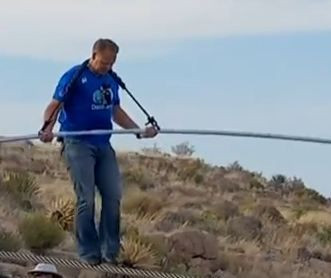
It's been more than 24 hours after an elevator at a tourist attraction malfunctioned leaving five people trapped 200 feet underground at the Grand Canyon Caverns in Arizona, said reports on Monday, Oct. 24.
Coconino Sheriff’s Office spokesperson Jon Paxton told the media that the five tourists got stranded inside the country’s largest dry caverns at sundown, Sunday, Oct. 23.
There is an underground hotel suite and restaurant present at the bottom of the attraction.
The individuals have medical conditions that prevented them from climbing up 20 flights of stairs to reach above ground in Peach Springs, Paxton told the media.
The stairwell is similar to an old fire escape, compounding the issue of accessibility, he added.
Efforts are being made by the elevator repair personnel to fix the lift. They hooked up the elevator to an external generator Monday, but the plug-in proved unsuccessful, Paxton said.
The sheriff’s office is also weighing using a harness to hoist the five tourists out of the caverns through the elevator shaft if the machinery cannot be fixed soon.
In the meantime, the five tourists are now staying inside the underground suite which sleeps six people and costs $1,000 a night for two. The suite is equipped with two queen beds, a fold-out futon, an “RV style” bathroom, and a kitchenette with a microwave and a mini fridge.
The natural limestone caverns, said to be the largest dry caverns in the U.S., occupy a desert region southwest of Grand Canyon National Park about 110 miles from the California border.
The caverns are said to have been created by natural forces 65 million years ago. Facilities at the site, part of historic Route 66, are privately operated.
During the Mississippian Period, 345 million years ago, the southwestern United States was covered by ocean. Skeletons of sea life settling to the depths created mud with a high percentage of calcium. This eventually hardened into the limestone bedrock seen in the caverns today. Over millions of years, the bedrock was pushed up to over 5,000 feet (1,500 m) above sea level.
© 2025 Latin Times. All rights reserved. Do not reproduce without permission.



